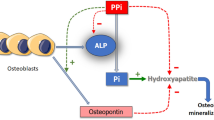Abstract
The absence of breast development and the prevention of osteoporosis in Ullrich-Turner syndrome (UTS) require oestrogen/gestagen substitution therapy. In 8 out of 35 (23%) patients with UTS treated with conjugated equine oestrogens and cyclically with norethisterone acetate, the serum liver enzymes increased to conspicuous levels (AST 35; 20–73 U/l, ALT 92; 37–141 U/l, GGT 77; 25–227 U/l, [median; min-max]). These findings were compared with those in 41 tall girls who received a six-fold larger dose of conjugated equine oestrogens for the reduction of final height. None of these 41 girls showed abnormal serum liver enzyme levels. The conspicuous rise in serum liver enzyme levels occurred in the majority of the UTS patients before norethistherone acetate was added to the oestrogen replacement therapy. No essential morphological equivalent was found in liver sonography and biopsy studies. During the follow up the elevated serum liver enzyme levels showed reversibility when medication was temporarily discontinued and either a slow decrease or a steady state after therapy was continued.
Conclusion
Patients with UTS on oral oestrogen replacement therapy are more susceptible to develop increased serum liver enzyme levels as compared with eukaryotic females treated with the same oestrogen preparation for other disorders. As the underlying pathomechanism is unknown and adverse long-term effects cannot be ruled out, avoiding the portal vein and using the transdermal application of oestrogen may represent a viable solution to the problem.
Similar content being viewed by others
Abbreviations
- UTS :
-
Ullrich-Turner syndrome
References
Akpowowo HE, Göretzlehner G, Brügmann E, Töwe J (1976) Leberfunktionsuntersuchungen unter dem Einfluß von Sequentialtherapien mit Äthinylöstradiol-Noräthisteronazetat und Äthinylöstradiol-Chlormadinonazetat. Zentralbl Gynäkol 98:1198–1203
Brügmann E, Göretzlehner G, Klie E, Schwager A, Maas M (1978) Leberfunktionsuntersuchungen unter dem Einfluß von 4 Sequenzpräparaten zur hormonalen Kontrazeption. Z Ges Inn Med 22:826–829
Campbell S, Whitehead MI (1982) Potency and hepato-cellular effects of oestrogens after oral, percutaneous and subcutaneous administration: workshop report. In: Van Keep PA, Utian WH, Vermeulen A (eds) The controversial climacteric. MTP Press, Lancaster, p 103
Christopherson WM (1975) Liver tumours and the pill. BMJ 22:756
Dickerson J, Bressler R, Christian CD (1980) Liver function tests and lowdose estrogen oral contraceptives. Contraception 22:597–603
Greer T (1989) Hepatic adenoma and oral contraceptive use. J Fam Pract 28:322–326
Haramburu F (1992) Hormonal contraceptives. In: Dukes MNG (ed) Meyler's Side effects of drugs. Elsevier Science Publishers, Amsterdam, pp 1001–1002
Illig R, Decampo C, Lang-Muritano MR, Prader A, Torresani T, Werder EA, Willi U, Schenkel L (1990) A physiological mode of puberty induction in hypogonadal girls by low dose transdermal 17β-oestradiol. Eur J Pediatr 150:86–91
La Vecchia C, Negri E, Parazzini F (1989) Oral contraceptives and primary liver cancer. Br J Cancer 59:460–461
Mathieu D, Zaframi ES, Anglade MC, et al (1989) Association of focal nodular hyperplasia and hepatic hemangioma. Gastroenterology 97:154–157
Moore B, Paterson M, Sturdee D (1987) Effect of oral hormone replacement therapy on liver function tests. Maturitas 9:7–15
Neuberger J, Forman D, Doll R (1986) Oral contraceptives and hepatocellular carcinomas. BMJ 292:1355–1357
Schneider WHF, Matt K, Irsigler H, Lageder H, Schubert H (1975) Gynäkologische, hämatologische und Stoffwechseluntersuchungen unter der Therapie mit einem Östrogen-Gestagen-Kombinationspräparat. Arzneimittelforschung 25:959–962
Teter J, Hasan HM (1975) Estrogénothérapie substitutive et fonctions hépatiques. Rev Franç Endocrinol Clin 16:253–261
Walden CE, Knopp RH, Johnson JL, Heiss G, Wahl PW, Hoover JJ (1986) Effect of estrogen/progestin potency on clinical chemistry measures. Am J Epidemiol 123:517–531
Whitehead M (1982) Oestrogens: relative potencies and hepatic effects after different routes of administration. J Obstetr Gynecol [Suppl] 3:11–16
World Health Organization (1989) Combined oral contraceptives and liver cancer. The WHO Collaborative study of neoplasia and steroid contraceptives. Int J Cancer 43:254–259
Author information
Authors and Affiliations
Rights and permissions
About this article
Cite this article
Wemme, H., Pohlenz, J. & Schönberger, W. Effect of oestrogen/gestagen replacement therapy on liver enzymes in patients with Ullrich-Turner Syndrome. Eur J Pediatr 154, 807–810 (1995). https://doi.org/10.1007/BF01959786
Received:
Accepted:
Issue Date:
DOI: https://doi.org/10.1007/BF01959786




